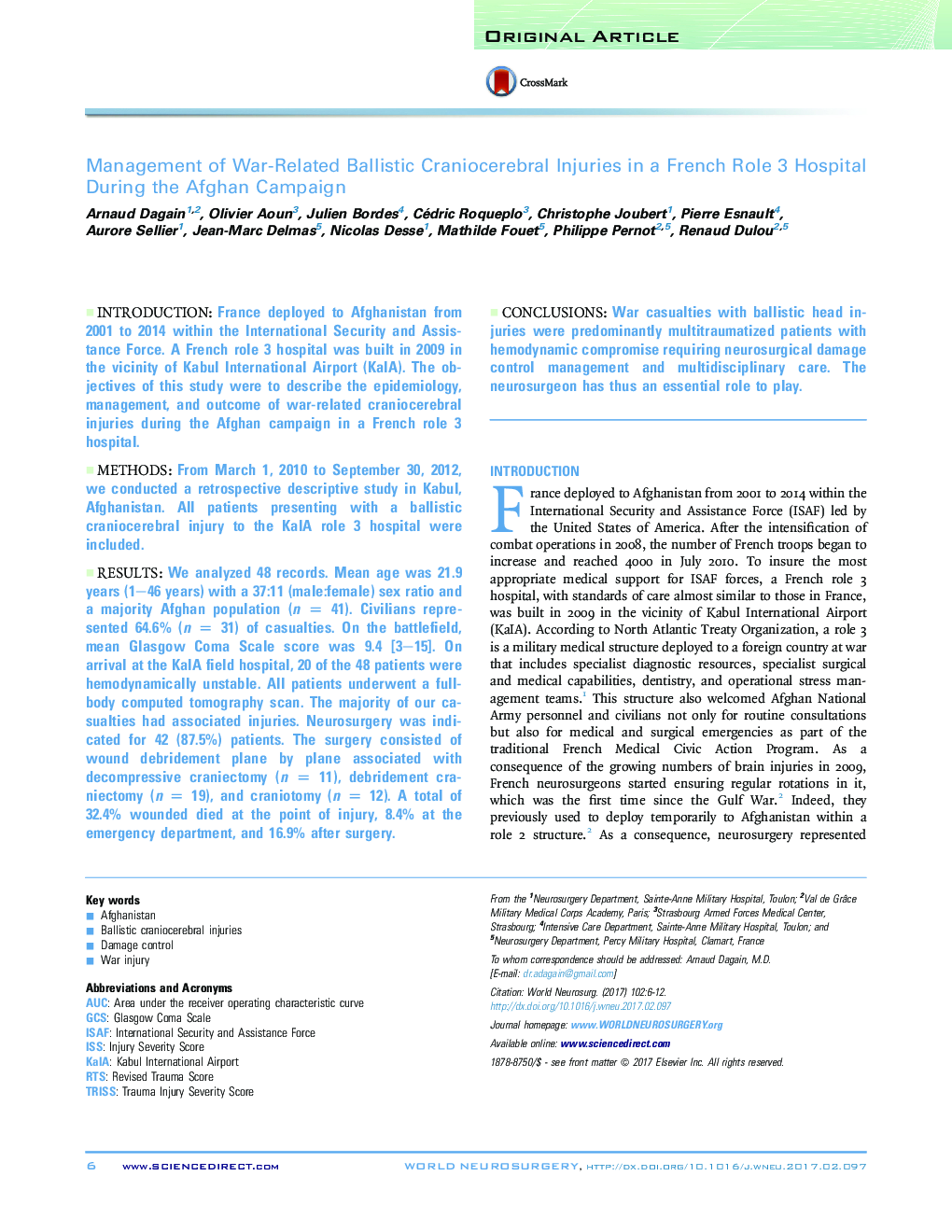| Article ID | Journal | Published Year | Pages | File Type |
|---|---|---|---|---|
| 5634584 | World Neurosurgery | 2017 | 7 Pages |
IntroductionFrance deployed to Afghanistan from 2001 to 2014 within the International Security and Assistance Force. A French role 3 hospital was built in 2009 in the vicinity of Kabul International Airport (KaIA). The objectives of this study were to describe the epidemiology, management, and outcome of war-related craniocerebral injuries during the Afghan campaign in a French role 3 hospital.MethodsFrom March 1, 2010 to September 30, 2012, we conducted a retrospective descriptive study in Kabul, Afghanistan. All patients presenting with a ballistic craniocerebral injury to the KaIA role 3 hospital were included.ResultsWe analyzed 48 records. Mean age was 21.9 years (1-46 years) with a 37:11 (male:female) sex ratio and a majority Afghan population (n = 41). Civilians represented 64.6% (n = 31) of casualties. On the battlefield, mean Glasgow Coma Scale score was 9.4 [3-15]. On arrival at the KaIA field hospital, 20 of the 48 patients were hemodynamically unstable. All patients underwent a full-body computed tomography scan. The majority of our casualties had associated injuries. Neurosurgery was indicated for 42 (87.5%) patients. The surgery consisted of wound debridement plane by plane associated with decompressive craniectomy (n = 11), debridement craniectomy (n = 19), and craniotomy (n = 12). A total of 32.4% wounded died at the point of injury, 8.4% at the emergency department, and 16.9% after surgery.ConclusionsWar casualties with ballistic head injuries were predominantly multitraumatized patients with hemodynamic compromise requiring neurosurgical damage control management and multidisciplinary care. The neurosurgeon has thus an essential role to play.
